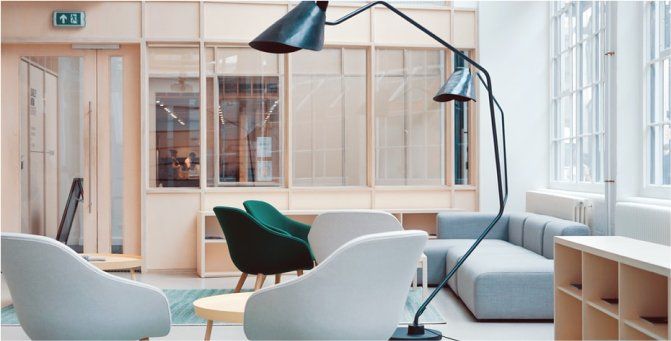Female To Male (FTM) & Female To Nonbinary (FTN) Reconstruction Chest Surgery
Periareolar Top Surgery
A Periareolar incision is ideal for patients with a small volume of breast tissue present, good skin elasticity and minimal nipple ptosis, but with an areola that is larger than the desired size. Unlike the Keyhole approach, the incision is carried all the way around the areola and the areola is reduced in diameter to create an aesthetically more pleasing size and/or shape. This procedure results in a very flat chest, but only a small amount of extra skin is able to be removed and there is limited ability to move the nipple areola position from its preoperative location on the chest wall.
Nipple Characteristics
Similar to the Double Incision, you have control over your nipple areola size and shape, but not location. Because only a limited amount of skin can be removed from around the nipple areola, the ability to move the nipple from its preoperative location on the chest wall is limited to about 1 cm. Your nipple areola shape and size, however, are completely customizable. If you prefer a smaller versus a larger nipple diameter or an oval versus a circular shape, you will have the ability to communicate these desires to Dr. Chandler and implement them into your surgical plan. In addition, your nipple projection itself can be reduced, if you feel that your nipple is too overly projected.
How the Procedure is Performed
First, the new nipple areola shape is marked and incised in an oval that is 2-2.2 cm in vertical height by 2.6-3 cm horizontally to create a nipple size and shape that is more masculine in appearance. Then a larger circular incision is made all the way around the edge of the areola, and depending on the amount of skin excess, may extend further out beyond the areola to remove excess skin. The breast tissue is removed by deepening an incision along the inferior180 degrees of the areola to allow access to the underlying tissue, while simultaneously creating a uniform chest wall flap to be left behind. Once the tissue is removed, the skin incisions are closed together around the new smaller areola. A special suture called a cerclage stitch is used to cinch the edges of the new areola to the outer edged of the surrounding skin flap which prevents tension on the closure.

Indications for the Periareolar Approach
- Small amount of breast tissue
- Minimal to no skin excess
- Nipple ptosis less than 1 cm
- Minimal scarring desired but ok with nipple position that is slightly more central
In the Periareolar approach, maximal chest wall flatness can be achieved through a minimal scar, but there is little to no control over nipple areola complex location. These are the main benefits and disadvantages to consider if you are weighing this approach over a Double Incision approach.
Downsides to the Periareolar Approach
Nipple Numbness
It is important to know that even though the nipple areola is kept attached, there is a very high likelihood of having nipple areola numbness after Periareolar top surgery, because so many of the nerve endings present in the tissue underlying the nipple and inferior to the nipple are no longer providing sensation. As with the Double Incision approach, this numbness is likely to resolve with time because nerves will usually regenerate into the nipple over time. However, permanent numbness is a possibility.
Limited Ability to Control for Nipple Position
The limited ability to control for nipple position may influence you into choosing the Double Incision approach over the Periareolar approach, if you feel that the aesthetic of the Double Incision is more in line with your surgical goals. We recommend you look in the mirror at where your nipple currently lies and imagine all the breast tissue below disappearing, after which your nipple will retract against your chest wall. If you can visualize where this location will be, think about whether you would be happy with the vertical and horizontal location of your nipple.
Chest Wall Pleating and Blood Supply
The Periareolar approach is best performed in patients with minimal to no extra skin, because only a minimal amount of skin can be removed without causing unnatural pleating on the chest wall. The more skin that is excised, the more tension there is on the nipple areola complex, putting it at greater risk for ischemic complications (loss of blood supply).
There is a limit to how much skin can be excised through this approach because the more skin that is excised, the more tension there is on the nipple areola, putting it at greater risk for is chemic complications (loss of blood supply).This is very important because with the inferior areolar skin incision required to allow access to remove underlying breast tissue, blood vessels that were previously supplying the nipple areola through underlying tissue and inferior tissue are now unavailable, and thus the nipple areola relies on blood supply coming in from the superior skin flap. Undue tension on the nipple areola after surgery could put the nipple at risk for poor blood supply. It is extremely important to avoid nicotine products in any form before and after Periareolar top surgery because nicotine limits the amount of oxygen delivery in the blood that reaches your healing nipple areola.
Summary
Periareolar top surgery is best for patients with minimal to no skin excess and a small volume of breast tissue, but with an areola diameter that is larger than desired. If the areola diameter is small enough, a Keyhole approach is an alternative option. Patients who are not ideal candidates for the Periareolar approach due to the size of their chest or the amount of skin excess would be better served with a larger-scar approach such as the Double Incision. Performing Periareolar surgery on patients who are not ideal candidates places them at risk for chest wall pleating, nipple blood supply issues and need for possible revision surgery.
Why Choose Us?

All Styles & Techniques
Double Incision, Keyhole, Peri, Buttonhole, Subglandular and Submuscular Breast Augmentation, Body Masculinization, Feminization and More

All Identities
Patients of all gender identities and all pronouns are welcome here

Individualized Care
We provide individualized care based on your specific surgical needs and goals and will inform you about your options

Book An Appointment With Us



